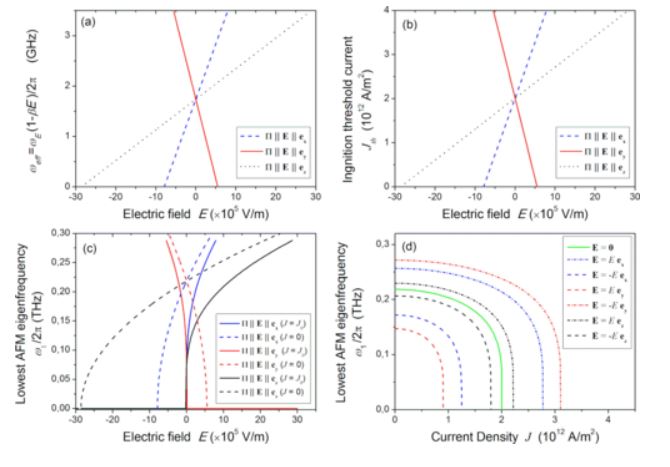
A theory of electrically controlled THz-frequency auto-oscillator, based on a trilayer heterostructure comprised of piezoelectric (PZ) ceramics, an NiO-based antiferromagnet, and a heavy metal (HM), is developed in the framework of the well-established antiferromagnetic (AFM) sigma model. It is assumed that the magnetostrictive antiferromagnet is monocrystalline and monodomain, and has mixed biaxial and cubic anisotropy. The frequency of the antiferromagnetic resonance (AFMR) of the heterostructure in a passive subcritical regime is calculated as a function of the following parameters: the choice of the ceramic PZ material and of its poling direction, modulus and orientation of the static electric field applied to the PZ layer, and the magnitude of the driving electric current injected into the HM layer. It is shown that the AFMR frequency of the heterostructure and the threshold value of the driving current for THz-frequency generation depend on the total AFM anisotropy, which can be substantially reduced by the bias electric field in the case when this field is collinear to the PZ poling direction. It is also shown that the variation of the PZ poling direction in respect to the bias electric field provides an additional degree of freedom that can be used to optimize the performance of AFM-based generators and detectors of THz-frequency signals.
This work has been published in PRB and can be accessed here.
